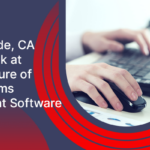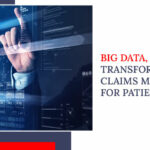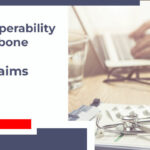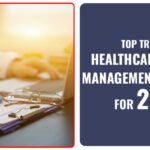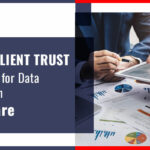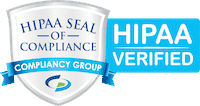Riverside, CA: A Look at the Future of Claims Management Software in 2024
July 25, 2024
The field of healthcare administration is constantly changing along with the healthcare business. Medical claims management is one sector that’s under significant change. Processing medical claims has always been a laborious, time-consuming procedure that is prone to mistakes and inefficiencies.
However, the field of healthcare administration is set for significant improvement in the future because of technological breakthroughs and the rise of medical claims software.
In this post, we’ll look at the trends influencing medical claims software in the future and how they’re transforming healthcare administration.
Automation and Artificial Intelligence (AI)
Automation and artificial intelligence (AI) are transforming the processing of medical claims by improving accuracy and optimizing operations. AI algorithms are used by medical claims software to automate repetitive processes, including data entry, coding, and claims adjudication.
Software that uses natural language processing (NLP) may extract pertinent information from unstructured data sources like medical records and doctor’s notes, decreasing the need for manual involvement and expediting the processing of claims.
Predictive analytics driven by AI is also capable of seeing patterns and trends in claims data, allowing for the early identification of possible fraud, waste, and abuse.
Medical claims software increases productivity, lowers expenses, and raises the standard of healthcare administration by automating repetitive processes and utilizing AI-driven insights.
Interoperability and Integration
Effective communication and data sharing between diverse healthcare systems and stakeholders are contingent upon interoperability and integration. Medical claims software now emphasizes interoperability standards like HL7 and FHIR to enable seamless integration with EHRs, PMS, and other healthcare IT solutions.
Medical claims software makes patient data, clinical data, and billing records instantly accessible by connecting with external data sources and systems.
This improves care coordination by removing silos. Faster reimbursements and improved patient outcomes result from this interoperability, which guarantees accurate and effective claim processing.
Patient-Centricity and User Engagement
In the modern healthcare industry, the patient comes first. The way medical claims software functions has a significant impact on the patient experience. The primary purpose of this modern claims software is to improve patient satisfaction through increased transparency, involvement, and dialogue throughout the claims procedure. Thanks to patient portals and smartphone applications, patients may monitor the status of their claims, get billing information, and interact with doctors immediately.
Medical claims software provides user engagement features, including configurable alarms, interactive interfaces, and educational resources to give patients more control over their healthcare spending. The demands of the patient are the primary focus of medical claims software, which improves patient happiness, loyalty, and general health results.
Medical claims software fosters a more patient-centric healthcare system and dramatically enhances the patient experience by placing the patient at the center of the claims process.
Regulatory Compliance and Security
Data security and patient confidentiality are critical issues in the healthcare industry. To safeguard sensitive patient data and guarantee compliance with regulations such as HITECH and HIPAA, this industry is subject to stringent and extensive regulatory requirements and data security standards. Software for medical claims is essential for ensuring adherence to these rules and navigating the many obstacles they present.
Medical claims software incorporates cutting-edge security elements and regulatory-susceptible compliance procedures to guarantee strong security. This software uses sophisticated encryption techniques, role-based access controls, and audit trails to guard against illegal access and breaches. These kinds of security precautions are essential for averting data loss or theft, which may have disastrous effects on patients and healthcare professionals alike.
Additionally, built-in compliance capabilities in medical claims software enable the guarantee of conformity to legal requirements and industry standards. This healthcare software makes sure that healthcare providers comply with all relevant rules by including regulatory reporting capabilities, coding standards, and claims validation procedures. Healthcare providers may feel confident knowing they are adhering to all legal obligations and protecting patient data when these elements are in place.
Predictive Analytics and Population Health Management
The healthcare industry is undergoing a significant shift towards value-based care and population health management. In this context, medical claims software plays a crucial role in evaluating claim data to identify high-risk groups, gaps in treatment, and intervention possibilities. This innovative software utilizes algorithms for predictive analytics, which analyze past claims data to forecast future trends in healthcare, spot usage trends, and group patients according to their risk profiles.
By leveraging predictive analytics, healthcare companies can allocate resources more effectively, minimize unnecessary hospitalizations, and proactively manage chronic illnesses. This proactive approach to population health management not only improves patient outcomes but also lowers costs and increases the overall effectiveness of healthcare delivery.
In essence, medical claims software is a powerful tool that empowers healthcare providers to gain insights into patient populations, identify areas of improvement, and develop targeted interventions to improve patient outcomes. By harnessing the power of predictive analytics, healthcare providers can deliver high-quality care while maximizing the value of their resources.
Conclusion
In conclusion, healthcare administration will become more patient-centric, efficient, and innovative with the help of advanced medical claims software. Such software is revolutionizing the way healthcare businesses handle claims, enhance patient results, and provide value to patients by adopting automation, interoperability, patient engagement, regulatory compliance, and predictive analytics. Keeping up with the times and bringing about significant change in the healthcare sector would require investing in state-of-the-art medical claims software.
7 Features Every Online Claim Management System Needs
June 27, 2024What to Look for in Claims Management Software?
May 8, 2024